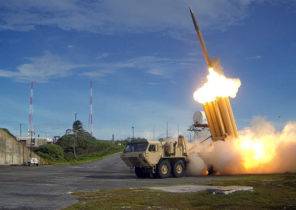What were the predecessors of the Swedish “superpoddelki”? History is full of submarines, with an exciting destiny. Svenska Dagbladet talks about the five most unusual and legendary submarines ever to walk in the ocean.
Among them — the French underwater combat ship, a top-secret Japanese submarine-giant and intimidating a participant of the American civil war.
1. French underwater “battle ship” disappeared without a trace
The French submarine “Surcouf” was launched in 1927 and then it was the largest and heaviest submarine in the world. Its length was 110 meters, the crew consisted of 118 people and to take she couldn to a depth of about 80 meters.
Then the experts called it “the submarine warship” because the vessel was equipped with two guns with a caliber of 23 cm. In addition, the Surcouf was equipped with numerous anti-aircraft guns and torpedoes.
The submarine even had a place for aircraft and boats.
From the beginning the unusual ship was suffering from a number of serious problems. The sub required a whole two minutes to dive to 12 meters, and so she was vulnerable to attacks from the air.
When the Second world war and the Nazi in 1939 Germany invaded Poland, “Surcouf” has resulted in combat readiness. In the summer of 1940 Hitler made his way to France, and the French submarine went to the British Plymouth. At that time, the “Surcouf” was part of the Free French forces led by General Charles de Gaulle.
That only happened with this submarine during the Second world war! Its main task was to transport dignitaries around the globe.
On the night of 18 February 1942, a strange thing happened. The crew of the American freighter “Thompson layks”, which has just gone through the Bermuda triangle, announced that they had stumbled upon a large object that came into view low over the surface. Many believed that this was the “Surcouf”, which never appeared.
Around the French submarine there was a lot of conspiracy theories. One of the most famous was the fact that it sunk an American fighter, while she handed the Essentials on a submarine the Germans.
It was never found, and the fate of the “Surcouf” still remains a mystery.
“Surcouf” was huge, you know, submarines and more.
2. Japanese giant hid the three bombers
By January 1945, the war winds haven’t been associated to Imperial Japan. In desperation, the Japanese armed forces have developed several strategies to try to reverse the hopeless situation. In addition to the famous kamikaze pilots, Japan had a submarine “Santoku” I-401.
Even by today’s standards it’s underwater vessel was a real giant. Submarine with a length of 122 meters accommodates three bombers. Planes could take to the air from the deck of this world’s only submarine aircraft carrier.
The crew consisted of 144 sailors and sank the submarine at 100 meters.
She was the third of its kind. Her sisters I-400 and I-402 was launched in 1944.
The main task of the vessel was to attack mainland USA. After the Americans repeatedly bombed Tokyo, a senior Japanese officers began to cry out for revenge. According to the plan, the I-401 was to be involved in the biological attack on San Diego. Japanese scientists in the 1930-ies killed Chinese prisoners with bubonic plague and that her and wanted to dump on the US West coast using planes from the depths of the I-401.
The intention to start a biological war against the United States has never been implemented, because the Japanese command feared the vengeance of the Americans.
Instead, the I-401 has received the task to bomb the locks of the Panama canal, preventing the Americans to move freely between the Atlantic and Pacific oceans. However, after the fall of Okinawa, the Japanese Navy decided that the attack on the Panama canal will not affect the outcome of the war. But the giant submarines were needed to protect Japan itself.
When the Emperor Hirohito after the atomic bombing of Nagasaki and Hiroshima recognized the surrender of Japan, the I-401 surrendered to an American submarine Segundo.
In 1946, the American Navy sunk “Santoku” along with many other Japanese vehicles, to prevent the technology falling into the hands of the USSR.
In 2005 a group of American scientists found its carcass at a depth of 820 meters.
3. Submarine of the Confederacy, equipped with a sixth
The war between the Northern and southern States was in full swing when inventor Horace Lawson Hunley (Horace Lawson Hunley) presented his revolutionary offspring, the submarine “H. L. Hunley”, which was moving under water, hiding from the eyes of the enemy.
The ship was built for the Confederacy (southern States).
It became the world’s first submarine sank an enemy ship, and probably one of the first full-powered vessels. Diving bells existed for several hundred years, but the “H. L. Hunley” moved by a screw and had cigar-shaped.
The inner space of the submarine, where were seven crew members, manually cool the screw, of course, conducive to claustrophobia. On Board was also a place for the officer who ran the ship.
The submarine was equipped with a sixth in length of 6.7 meters, the end of which is secured the explosives. She was supposed to detonate upon impact with the hull of an ordinary ship.
Serious problems began during the tests. One day, the captain accidentally plunged nesaratnam hatches and five of the seven members of the crew drowned. In 1863, during another test, with seven seafarers killed and the Hunley. The submarine picked up the Navy of the Confederacy, and it continued to prepare for service.
On the night of 17th February, 1864, is the time of the first job. The Navy of the Northern States have long been tightly blockaded the town of Charleston. Under cover of night “H. L. Hunley” approached the battleship “Housatonic”. The patrol spotted the submarine, and started firing her guns. Despite this, the “H. L. Hunley” was able to approach “Housatonic” closely. Followed by an explosion and the ship quickly sank.
The future is covered with darkness. One thing is clear: with the quest “H. L. Hunley” and never returned. It sank along with the crew, possibly at the time of the explosion. The Confederation, however, claimed that the submarine was sending “signals” in the form of blue light, and it could be due to the fact that the “H. L. Hunley” sank, not because of the explosion.
In 2000, 136 years later, the submarine raised from the bottom of the ocean. Today, the “H. L. Hunley” is in the Historical center of Warren Lash in South Carolina.
But it’s time to talk about the submarine that during his career sunk far more ships.
4. The horror of the Atlantic ocean — the pride of Hitler
A little about some submarines during the Second world war said so much as about the German U-47. And her captain Prenom Gunther (Günther Prien) legends no less.
It was a submarine type VIIB, which includes the workhorses of the German submarine fleet. U-47 was adopted in 1938. Her crew consisted of 45 sailors and officers. During the tests, the submarine was diving at 230 feet, but, presumably, could go to a depth of up to 295 metres. U-47 was equipped with torpedo launchers in the bow and stern, and a gun for surface attack.
U-47 left the port of Wilhelmshaven on 18 August 1939, two weeks before Nazi Germany invaded Poland. She was sent to sea in case France and Britain decide to fulfill the promise to the poles.
September 3, Britain and France, Nazi Germany declared war. Soon after U-47 were ordered to attack allied ships in the Bay of Biscay. And now, one by one were sunk merchant ships “Bosnia”, “Rio Carlo” and “Garavan”.
The second task of the U-47 has secured her fame. The British naval base at Scapa Flow very well guarded. Here was anchored the largest warship in the British Navy. The entrance to the Bay was mined and blocked by anti-submarine network. Coastal artillery and anti-submarine ships were always ready. Despite this, U-47 on the night of 18 October 1939 managed to get ashore undetected. At some point, the silhouette of the boat illuminated the headlights of a car taxi, but the driver apparently did not notice anything.
U-47 set his sights on a battle ship “Royal Oak”, the giant weighing 30 to 450 tons, built during the First world war. The submarine fired two torpedoes into the side of the 189-foot ship. But they just hit on its keel without causing any harm: the detonators didn’t work. Captain Prien reloaded guns, and three torpedo has fulfilled its purpose. Fifteen minutes later, “Royal Oak” sank. More than 800 of its crew members died.
At first the British did not even realize that the naval base attack, they assumed that the ship exploded due to some accident. And when they realized what was happening, the U-47 has slipped out of the Bay into the open sea.
Propaganda of intimidation was invaluable, and the dictator Adolf Hitler and his propaganda Minister Joseph Goebbels immediately took advantage of this incident. Overnight Prien became a national hero, his report about the heroism shown in cinemas of the Third Reich. The captain was awarded the highest military order of Nazi Germany, the Knight’s cross of the Iron cross. The rest of the crew was awarded the Iron cross first degree.
During the tenth RAID of U-47 disappeared. One of the popular theories is that she hit a mine or was hit by one of their own torpedoes. It was never found.
5. Sank everyone — including yourself
“Tang” was one of the most famous submarines of the U.S. Navy. Many said that during the Second world war she sank more ships than any other submarine found courtesy of my American. “Tang” operated in the Pacific ocean, and its main task was to destroy the Japanese merchant ships.
The submarine belonged to the type “Baláo” — class are the largest submarines of the us Navy. Theoretically, it could take at 187 metres, avoiding damage due to water pressure.
On the night of 11 October, “Tang” has aimed at two Japanese merchant ships and sank them. Two weeks later, the submarine came upon a large Japanese convoy under the protection of the many anti-submarine ships. Under cover of darkness “Tang” managed to get into the middle of the convoy. Targets have been selected carefully and correctly — and now many Japanese ships were on fire.
25 October, “Tang” launched her last torpedo, but instead of going towards the enemy ship, she spun and hit the submarine aft. “Tang” went helplessly to the bottom and hit it at a depth of 55 meters.
However, the 30 crew members miraculously managed to survive, locked in the front compartment of the boat, which did not manage to form leaks. The sailors destroyed secret documents and prepared to rise to the surface. But suddenly they heard the sound of propellers. This is a Japanese anti-submarine ship searched for “Tang”. A few minutes later the submarine was attacked with depth charges, but none of them hit the target, and the Japanese ship was gone.
The crew prepared to abandon ship through a hatch in the nose. To survive the 55-meter rise, the sailors used the oxygen tanks, which, fortunately, is also located in the front of the boat. One by one they left the damaged submarine, but survived only five. They were picked up by a Japanese ship, and they remained in captivity until the end of the war.
There is another submarine with an unusual hatch — Swedish design.
6. A lot of debate around the new Swedish superpoddelki
Submarine “Saab” A26 call unsinkable. It was constructed by the replacement of obsolete submarines of class “Södermanland County”. The A26 runs on the Stirling engine according to Saab, one of the quietest available on the market today. The submarine can dive to a depth of about 200 meters and is primarily adapted for Swedish waters.
Many details of the design of the vessel are kept secret, but around the gateway in its anterior part, a debate has been raging. According to one expert, who was interviewed by Svenska Dagbladet, the effective use of this gateway will not work. When the submarine rests on the bottom, it raises a cloud of sand and clay. If the hatch is open, it can get dirt to close it again is hard.







